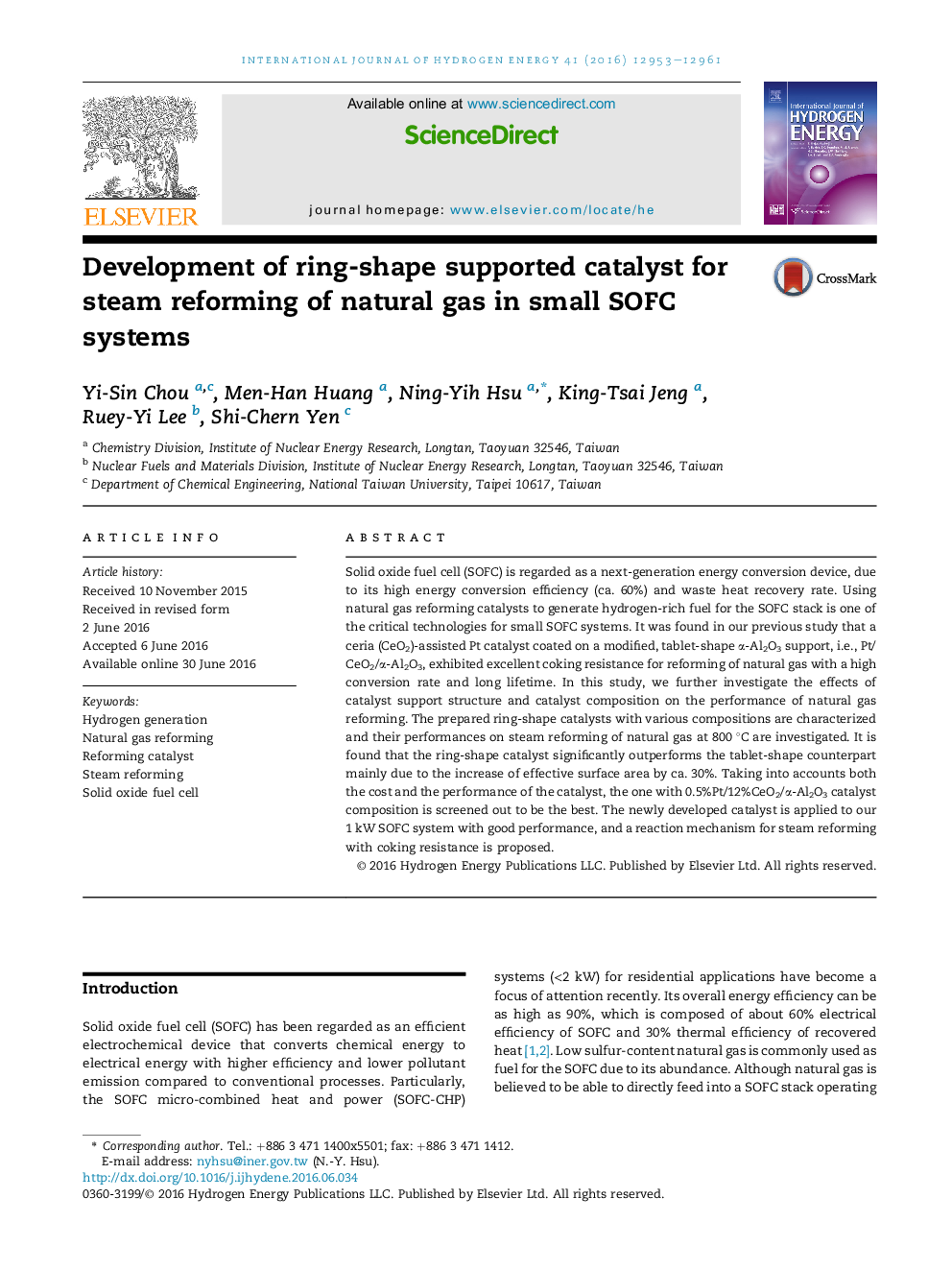| Article ID | Journal | Published Year | Pages | File Type |
|---|---|---|---|---|
| 1268208 | International Journal of Hydrogen Energy | 2016 | 9 Pages |
•Pt/CeO2/α-Al2O3 catalyst with coking-resistance is used for steam reforming.•The ring-shape catalyst significantly outperforms its tablet-shape counterpart.•The 0.5%Pt/12%CeO2/α-Al2O3 catalyst gives the best overall performance.•The developed catalyst exhibits good performance in 1 kW SOFC system.•A coking-resistant reaction mechanism is proposed for natural gas reforming.
Solid oxide fuel cell (SOFC) is regarded as a next-generation energy conversion device, due to its high energy conversion efficiency (ca. 60%) and waste heat recovery rate. Using natural gas reforming catalysts to generate hydrogen-rich fuel for the SOFC stack is one of the critical technologies for small SOFC systems. It was found in our previous study that a ceria (CeO2)-assisted Pt catalyst coated on a modified, tablet-shape α-Al2O3 support, i.e., Pt/CeO2/α-Al2O3, exhibited excellent coking resistance for reforming of natural gas with a high conversion rate and long lifetime. In this study, we further investigate the effects of catalyst support structure and catalyst composition on the performance of natural gas reforming. The prepared ring-shape catalysts with various compositions are characterized and their performances on steam reforming of natural gas at 800 °C are investigated. It is found that the ring-shape catalyst significantly outperforms the tablet-shape counterpart mainly due to the increase of effective surface area by ca. 30%. Taking into accounts both the cost and the performance of the catalyst, the one with 0.5%Pt/12%CeO2/α-Al2O3 catalyst composition is screened out to be the best. The newly developed catalyst is applied to our 1 kW SOFC system with good performance, and a reaction mechanism for steam reforming with coking resistance is proposed.
Graphical abstractFigure optionsDownload full-size imageDownload as PowerPoint slide
